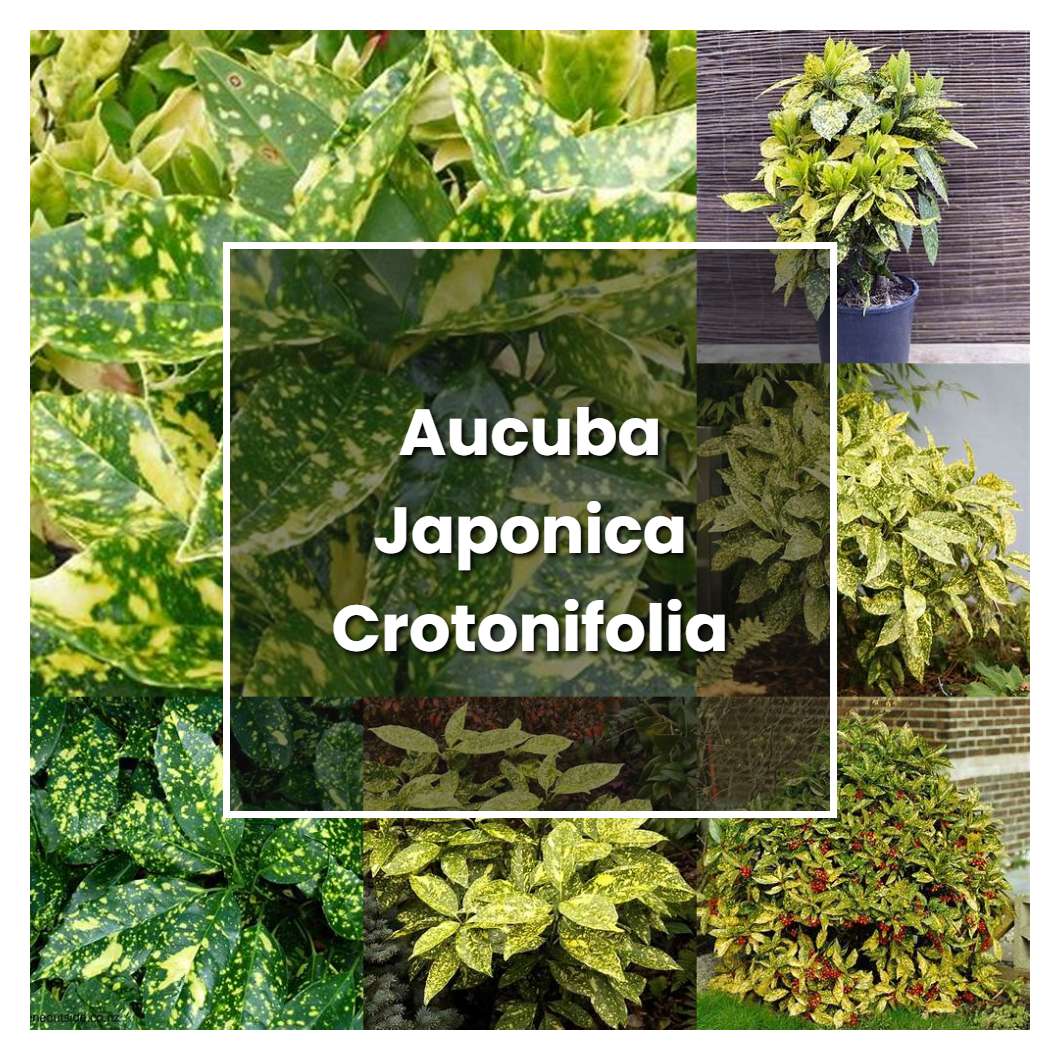Aucuba japonica crotonifolia is an evergreen shrub that is native to Japan. It is a popular plant in gardens and parks due to its glossy leaves and tolerance to shade. The leaves are dark green with yellow spots and the plant produces small, red berries.

Related plant:
Aucuba Japonica Rozannie
About soil condition, Aucuba Japonica Crotonifolia should be in a soil that is moist but well-drained. It can grow in both sun and shade, but it prefers partial shade. It is a good plant for shady areas in the garden.
Similar to other aucuba species, the aucuba japonica crotonifolia does best in partial to full sun. It can tolerate shade, but will likely have fewer leaves and a less dense growth habit. When grown in full sun, this plant will have more vibrant leaves with more of a yellowish color.
The temperature conditions that are required for the growth of Aucuba japonica crotonifolia are not too high or too low. The ideal temperature range is between 15 to 25 degrees Celsius. If the temperature is too high, the leaves of the plant will turn yellow and the plant will stop growing. If the temperature is too low, the plant will become dormant and the leaves will fall off.
Ideal humidity condition for this plant is 40-50%. The plant should be kept in a spot that has good drainage to avoid root rot. Providing humidity is important, especially during the winter months when the air is typically drier. Misting the plant with water can help provide the required humidity.
Regarding fertilizer, this plant does not require much. In fact, too much fertilizer will burn the roots. A slow-release fertilizer is best, applied in early spring. As for the roots, they are quite sensitive so it's best to be careful when transplanting.
Pruning is an important part of keeping your Aucuba Japonica Crotonifolia healthy and looking its best. While you can prune any time of year, the best time to do so is in late winter or early spring. This will allow the plant to heal quickly and put out new growth. When pruning, be sure to remove any dead or diseased branches. You can also thin out the plant to promote air circulation and light penetration.
Propagation of Aucuba japonica 'Crotonifolia' is best done by hardwood cuttings taken from young, vigorously growing stems in late summer or early fall. The cuttings should be about 6 inches (15 cm) long and made just below a leaf node. Remove the lower leaves and dip the cut end in rooting hormone before planting in a well-drained potting mix. Keep the cutting moist and in a shady location until new growth appears, which could take several months. Once rooted, the plant can be transplanted to a sunny or shady location in the garden.
Usually, the plant growth rate is considered to be medium speed. However, they can range from slow to fast growers depending on the cultivar. The average adult size of an aucuba japonica crotonifolia is between three and six feet.
Common problems for this kind of plant are leaf spot, rust and root rot. These problems are usually caused by too much moisture or poor drainage. To prevent these problems, make sure the plant has well-drained soil and does not sit in water. If the plant is already infected, remove the affected leaves and dispose of them.
Source:
Managing Pests in Gardens: Trees and Shrubs: AucubaUC IPM - ucanr.edu
Aucuba japonica Variegata, Aucuba, Gold Dust Plant
Aucuba japonica - UF/IFAS Assessment - University of Florida
